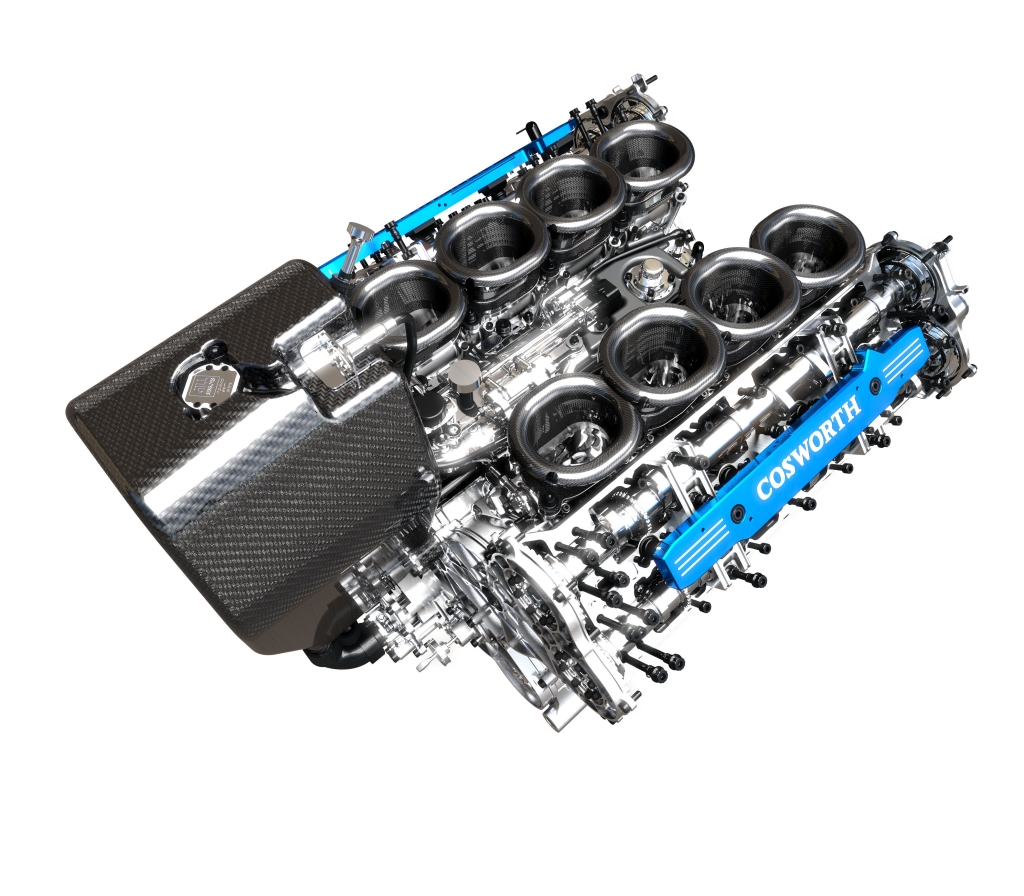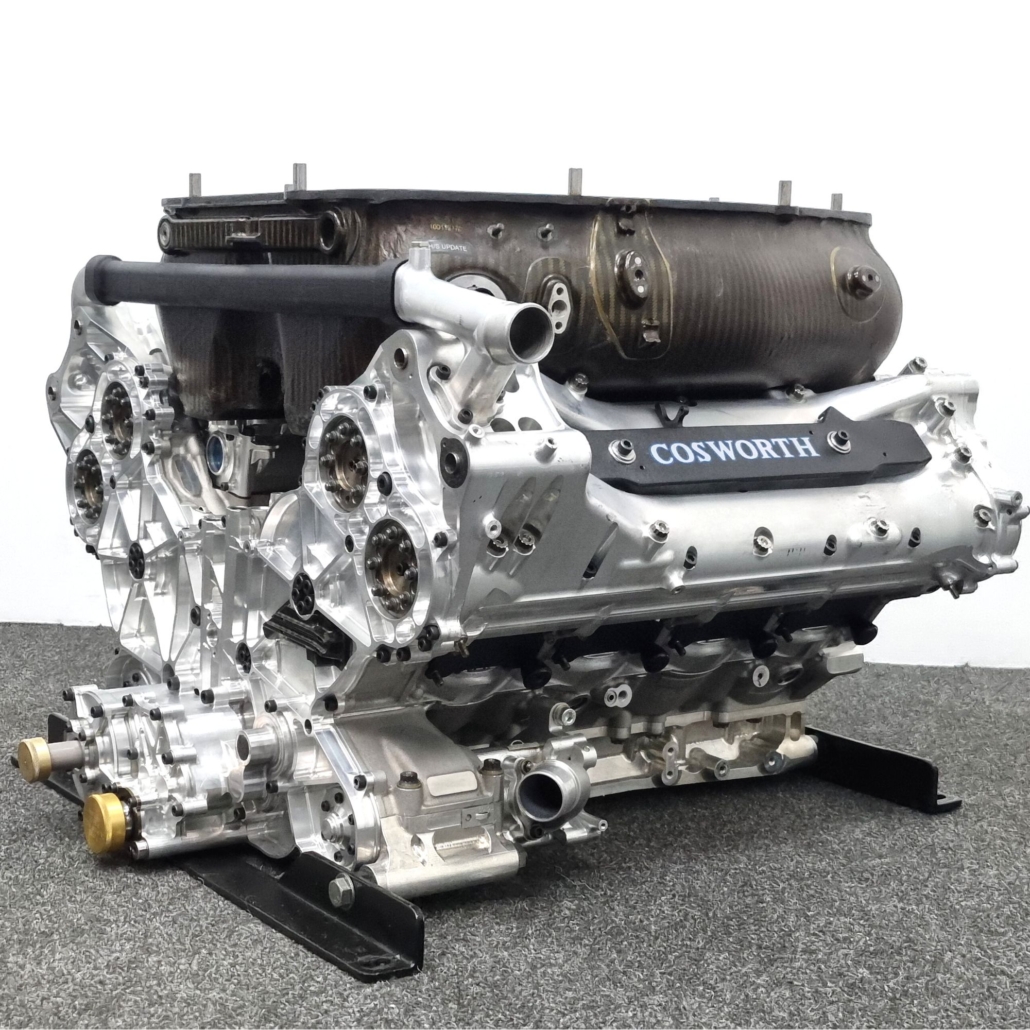FORMULA 1 ENGINE TEST
Turn your volume up to 11 and sit back and enjoy 90 seconds of pure, unadulterated noise in this Cosworth Formula 1 engine test as a CA2010 engine is pushed through its paces on Cosworth’s transient dyno at speeds of up to 18,500 rpm.
The Cosworth CA engine represented a pinnacle in the design of high-speed naturally aspirated engines for Formula 1 racing. Calling on over 50 years of experience that dated back to the legendary DFV, Cosworth created their most ground-breaking engine ever, capable of reaching 20,000 rpm in 2006.
Sadly, in 2010 the engine speeds were restricted by regulation to 18,500 rpm, but that didn’t stop the cars of that era sounding amazing.
We stock race-used parts from Cosworth’s TJ and CA engines that can be displayed for all to see. Just keep an eye on our Memorabilia section of our on-line shop to see what’s currently available. Each part can be bought directly from the website shop and delivered straight to your door.
If you enjoy listening to the roar of a Formula 1 engine being put through its paces then you can download it as a ringtone for your phone (Android only, sorry!).
The Need for Speed
In the ear-splitting ‘90s and 2000’s, engine speed was THE metric that Formula 1 engine manufacturers wanted to push to the limit. In a naturally aspirated engine, the goal is to get as much fuel and air into the combustion chamber, and the best way to do this is to run the engine as fast as possible. Unlike power figures, engine speed is something that rival competitors can measure from the side of the track, using audio recording equipment.
It is generally acknowledged that BMW were the first F1 engine manufacturer to break the 19,000 rpm limit in 2002. Toyota soon leapfrogged their fellow German rivals, reaching 19,200 rpm in 2005 despite the introduction of rules to increase engine mileage. These regulations caused a brief respite in the push for speed, but by the end of the V10 era in 2005 the entire grid was running at 19,000 rpm.
Switch to V8 Power
In an attempt to curb engine power, the FIA mandated a switch from 3.0 litre V10s to 2.4 litre V8s in 2006. However, this had little or no effect on the push for speed. Cosworth’s Bruce Wood explained how they did this to Race Engine Technology as part of their exposure on the CA . “To go faster you just have to keep making the bore bigger and the stroke shorter and sort out your valves.
“While developing the TJ we did tests on our single cylinder rig of 96, 97 and 98 mm bores – it was all about higher speed. We were considering a bigger bore and bigger valves and a compound valve angle before the mandatory switch to V8s was brought in. We had thereby established that combustion was OK with the 98 mm bore (the maximum permitted in 2006), so there was no reason not to move to it…”
In 2010 Cosworth returned to Formula 1 with the CA2010. By this time the rules had necessitated a cap in speed of 18,500 rpm. Nevertheless, the cars still sounded incredible, and drop in speed didn’t prevent engines like the CA2010 from reaching power figures of over 775 bhp.
Keeping It Together
20,000 rpm is a huge achievement – as this Formula 1 engine test video shows, even 18,500 rpm sounds terrific, but running at these speeds results in a number of engineering headaches. First of all, the inertia loads on the moving components roughly increase with the square of the speed. So a jump from 10,000 rpm to 20,000 rpm might be double the speed but will result in a quadruple increase in inertia loads.

The second problem with increasing engine speed is that there is a corresponding increase in vibration. This was compounded with the switch from V10 to V8 engines in 2006. A V8 engine like the CA equipped with a flat plane crankshaft will naturally have out-of-balance vibration in a horizontal direction.
Bruce Wood gives a further insight into the problems that this horizontal shaking of the engine would cause on the CA. “When we first started running the CA, the scavenge pumps, which are held onto the sump with horizontal bolts, would fall off. Those are 8 mm cap screws, the heads of which snapped off because of the unbalanced force, which is why our scavenge pumps are now secured by Multiphase bolts!”
Torsional Control
One other problem to resolve before unlocking 20,000 rpm is torsional resonance of rotating components like the camshafts and crankshaft. Torsional resonance has always been an issue in Formula 1 engines – Keith Duckworth had to resort to flexible compound gears to keep the gear drive intact in the DFV in 1967. Fast forward 4 decades, and double the engine speed, and the torsional problems become a whole lot worse.

“In terms of the torsional vibration inside the engine, we knew what we were up against, which is why the CA has far more damping devices in it than our previous V10 engines.”, says Wood. “We have a ‘compliant’ gear train that has been in our Formula One engines for years, then in addition (to two dampened compound gears) the CA has compliant quill drives within each of its two auxiliary drives, a big viscous damper on the back of the crankshaft, viscous dampers on the back of each camshaft and friction quill dampers in the front of each camshaft. That means in total it has 13 dampers – 14 when fitted with KERS.”
Modatek provide parts and consultancy for a wide range of Cosworth historic engines, including the CA. Want more information? Just send us a message through our Contact Us page.


